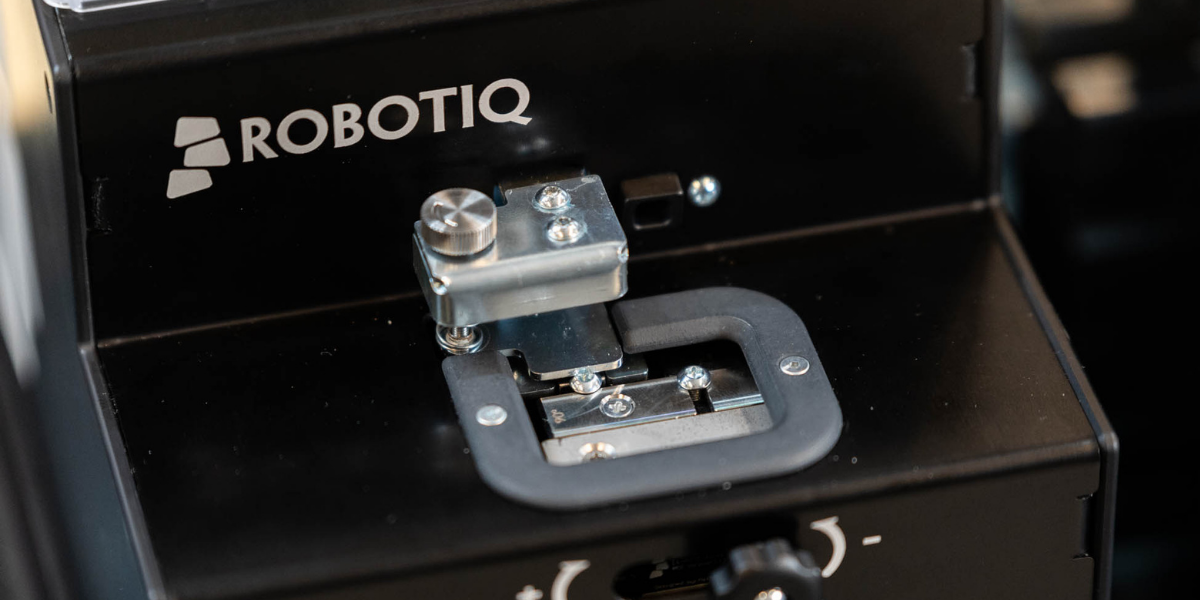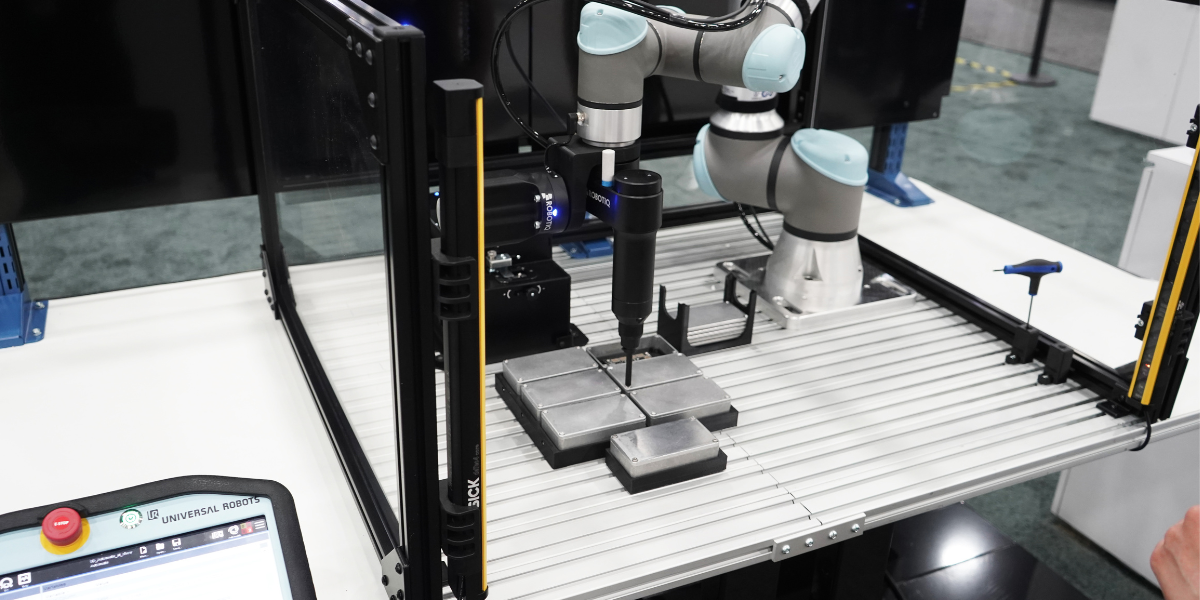Screw Feeding: The Unsung Hero of Robotic Screwdriving

Posted on Jul 05, 2022 9:15 AM. 5 min read time
For assembly tasks, semiautomated or manual screwdriving tools have been the norm for years. However, recently robotic screwdriving has risen in popularity thanks to its improved consistency and productivity.
But people often forget about screw feeding.
Screw feeding is a process to feed screws into the screwdriving tool. An efficient screw feeding process will influence the speed and accuracy of your entire robotic screwdriving task.
How does screw feeding work?
Why is it so important for effective robotic screwdriving?
And what are the benefits when you employ the right screw feeding system?
Let's take a closer look at this unsung hero of robotic screwdriving: the screw feeder system.
.jpg?width=358&name=Photo_Screwdriving%20Solution_Screwdriver%20taking%20a%20screw%20from%20feeder%20(4).jpg)
What is a screw feeder system?
A screw feeder system is a device that feeds screws into a screwdriver bit at a consistent rate. It can be used to improve manual screwdriving or as a core part of automated assembly, such as with a screwdriving robot.
The right screwdriving machine will help you improve the productivity, consistency, and quality of your robotic assembly while reducing costs.
Usually, you feed the screws into a hopper. Through a combination of vibration and the shape of the machine's internal fixtures, the screw feeder will align the next screw and drop it to the pick point.
There are several screw feeding systems available on the market. They usually vary depending on the size and type of screws that they can handle and what type of screwdriving operation they support (e.g. manual or automated). Some screw feeders can only handle screws made of particular materials.
Why screw feeding is important for robotic screwdriving
Screw feeding is necessary for robotic screwdriving because it ensures that screws are always presented in the right way. This is essential for the robot to be able to effectively drive screws.
As you will know if you have attempted screwdriving by hand, having screws all jumbled together in a bucket makes it difficult to grab the correct screw quickly and easily. It would be extremely difficult (or even impossible) for robots to perform this type of bin picking application, so a screw feeder is vital.
Screw feeding is also important because it improves consistency. If you were to pick the screws with bin picking, each pick may take a variable amount of time as the robot tried to detect the position of each screw. With a screw feeder, you know for sure that screws will arrive at exactly the same rate every time.
How does a screw feeding machine work?
The operation of a screw feeding machine is simple. With a robotic application kit solution, you don't even need to worry about integrating the machine with your robot — it is all taken care of for you.
You simply pour screws into the hopper and let the robot take care of the rest.
For each screwdriving operation, the robot will follow this process:
-
The screw feeder aligns and presents the next screw, ready for picking.
-
The robot moves to the pick location and picks the screw.
-
If your robot can detect screws (as with the pneumatic Robotiq Screwdriving Solution) it will tell if the screw has been picked. If it has dropped the screw, it will try again.
-
The robot moves to the screwdriving location and drives the screw into the workpiece.
This simple process is only easy to do if you are using a robotic solution that removes the complexity for you. With most conventional screwdriving automation solutions, the integration required to get you to this stage can be quite complex.
5 significant benefits of using an automatic screw feeding machine
There are various benefits to using a screw feeding machine with both manual and robotic screwdriving.
Here are 5 significant benefits of using a screw feeding system:
1. Faster screwing
Automatic screwfeeding improves the speed of both manual and robotic screwdriving. This results in increased efficiency and productivity in your manufacturing assembly process.
2. Improved quality
Quality and consistency are usually the top benefits of choosing a robotic screwdriving process over a manual one. By providing screws to the robot at exactly the same angle every time, the screw feeder helps keep a consistent screwdriving quality.
3. Simple and cost-effective
Compared to custom-built automation components, screw feeders are a simple machine that won't use up much of your budget. This makes them a great option when you are starting out with automation.
4. Boosts productivity
The productivity boost of using robots is usually the first benefit people think about. Although consistency is really the top benefit, a robotic screwdriver with a screw feeding machine will also improve both the efficiency and productivity of your assembly process.
5. Wide applicability
Screw feeding systems are suitable for a wide range of applications across industries, including in electronics, automotive, aerospace, and many more. As you can find an automatic screw feeder for most common screw sizes, it's likely you'll find one that meets your needs.
How to ensure your screw feeder works with your robot
With robotic screwdriving, the key is to ensure that your screw feeder works with your chosen model of robot.
If you are deploying your robot yourself with a DIY approach, this can be challenging. You need to know how to electronically integrate with the screw feeder and link it with the robot's programming.
But there is a simpler solution.
Integrated application kits, like the Robotiq Screwdriving Solution are the best way to ensure that you have a screw feeder compatible with your robotic system.
The Robotiq Solution comes with a screw feeder as part of the application kit itself. You don't need to do any work to integrate it with the robot — it will work right out of the box.
Find out more on our product page
What type of screws do you use for your assembly tasks? Tell us in the comments below or join the discussion on LinkedIn, Twitter, Facebook, or the DoF professional robotics community.





Leave a comment